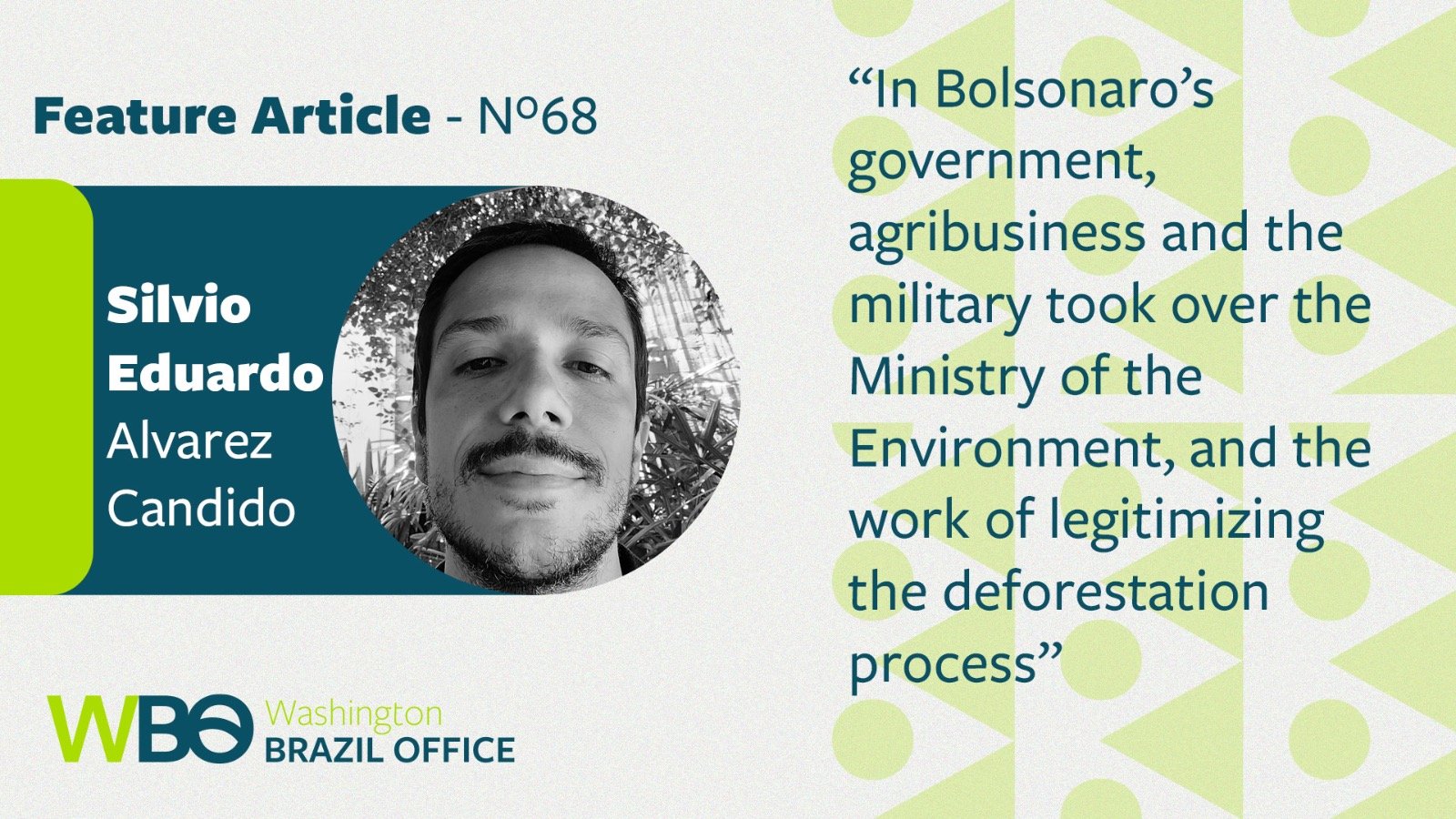The Unequal Division of Labor in the Deforestation of the Brazilian Amazon Rainforest
Silvio Eduardo Alvarez Candido. Professor of Organization Studies and the coordinator of the Network for Socioeconomic and Organizational Studies in the Amazon Rainforest (www.resoa.ufscar.br) at the Federal University of Sao Carlos (UFSCar). His current research addresses the dynamic of markets associated with the illegal deforestation of the Amazon Rainforest in Brazil, especially finance and the production and processing of soybeans and cattle beef. This text was originally written for issue 68 of the WBO Newsletter, published on May 26, 2023. Fill in the form at the bottom of the text to access and subscribe to the WBO weekly newsletter in English.
The illegal deforestation of the Brazilian Amazon today is enabled by interconnected economic sectors. These tend to be addressed by scholars and authorities separately. I would like to draw attention to the larger picture and to how the dynamic of deforestation entails a division of labor among several fields cross-cut by unequal relations. The “dirty work” of clearing the forest is undertaken in regions with the most precarious presence of the State and in relatively powerless sectors of society. These are connected to more powerful Brazilian agribusiness interest, which benefit from deforestation without risking exposure.
Driving off onto secondary roads, loggers usually penetrate the areas to be “opened”, building unauthorized roads usually on public lands. Researchers from the Brazilian NGO Imazon estimate the existence of a network of 3.46 million kilometers of such roads throughout the Brazilian Amazon. These commonly invade indigenous peoples’, quilombolas’ and riverside communities’ lands. Loggers intimidate communities using violent means and economically co-opt inhabitants. Precarious labor is used for selective logging, and high valued species extracted are sold predominantly in domestic markets.
The role of illegal land markets is key in the dynamic of deforestation and tend to be neglected. The rule in this business is: “Whoever deforests, owns it.” Commonly using pathways opened by loggers, perpetrators burn tons of highly biodiverse biomass, adding its carbon to the atmosphere and reducing to ashes resources from which the livelihoods of traditional communities depend. This also involves precarious, slavery-like, working conditions. The clearing enables a sharp increase in the price of land, compensating risks undertaken by perpetrators. The illegal commercialization of lots is enabled by fragile institutions regulating property in the Amazon. Federal land regularization programs, such as Terra Legal and Titula Brasil, may allow the early legalization of grabbed lands.
But the “purification” of deforested areas tends to start when they are purchased for cattle ranching. Actors involved in it come from consolidated parts of the Amazon frontier or work for investors from wealthy parts of the country. Owners getting their livelihoods from ranching buy larger areas with the resources from the sale of their lands further south, expanding their patrimony and business into the frontier. For speculators, cattle is a way to assure possession and to enable its regularization. Fattening cattle is a flexible and low-risk activity, entailing minimal labor and relatively small investment, and is used to occupy large and remote areas. Ranches owned by both small producers and speculators are extensive and inefficient. Amazon cattle is still mainly commercialized in domestic markets (circa 75 percent of the volume), but exports are rising due to increasing control over foot-and-mouth disease, the growth and internationalization of the three major Brazilian beef-processing companies (JBS, Marfrig and Minerva), and the rising demand from China. Despite being considered as the main vector of deforestation, ranching in the Amazon is deemed as a legitimate activity, made up of powerful and politically organized Brazilian agribusiness.
“Driving off onto secondary roads, loggers usually penetrate the areas to be ‘opened’, building unauthorized roads usually on public lands. Researchers from the Brazilian NGO Imazon estimate the existence of a network of 3.46 million kilometers of such roads throughout the Brazilian Amazon. ”
The intercropped production of soy and corn is the most capitalized activity of the dynamic that moves deforestation forward. While farmers are directly involved in many crimes in the Amazon, they increasingly participate only when the “dirty work” is done. They reward the pioneering activities and the risks taken by ranchers and land grabbers by purchasing their prized lands. Farming deploys sophisticated production technology, entails better and increasingly formalized working conditions, and is strongly integrated into global finance. Properties are predominantly legalized and are the locations for the production of grains for major traders such as Cargill, ADM, Bunge, LDC, Ammagi and the Chinese entrant COFCO. Part of the soy is exported in natura, especially to China (circa 49 percent). Another part (49 percent) is domestically processed into soy meal, which is exported (52 percent) and used domestically for animal feed (48 percent), and soy oil, predominantly consumed in the country for food and biodiesel production (77 percent).
The effectiveness of public and private attempts to control deforestation depend on the intervention in the dynamic interconnection of these economic sectors. Brazil made important progress in combating deforestation with the implementation, in the first mandate of Lula, of the most comprehensive and structured policy ever created for that end: the Plan for the Prevention and Control of Deforestation in the Amazon (PPCDAm). In the 2010s, opposition to the plan gradually increased due to new investments in infrastructure in the Amazon and to the political strengthening of agribusiness. In Bolsonaro’s government, agribusiness and the military took over the Ministry of the Environment, and the work of legitimizing sectors taking care of the dirty part of the deforestation process was continuous. Now, the backlashes generated have to be fixed. Those interested in this process should read and contribute to the ongoing public consultation about the resumption of PPCDAm.

